
Rights Reserved - Free Access.
This digital object is protected by copyright and/or related rights. This digital object is accessible without charge, but its use is subject to written permission.
Unless expressly stated otherwise in the licensing conditions, you are free to make any of the acts permitted by your national copyright and related rights act, including browsing, printing and making a copy for your own personal purposes.
All other acts of reproduction and communication to the public are subject to the licensing conditions attached to the digital object.
ARMY BOOTS OF THE WORLD. REVIEWS
Important notice: we do not sell any boots! The prices are given for information purposes only!
Austria ![]()
Austrian Army Boots (Bundesheer Kampfschuh)
Formally, Austria is a neutral country since 1945, but in fact this country cooperates closely with the NATO countries. Many elements of uniform and equipment of the Austrian Federal ground forces (Bundesheer) are completely or partially taken from the United States Army Forces equipment. For example, one can't help mentioning M-65-type jacket, army backpack, helmet, soldier sapper shovel and other stuff ... Another example: the elements of the cut of the modern Austrian field jacket model KAZ-03 (Kampfanzug 2003), which replaced the uniform of KAZ-75 (Kampfanzug 1975) model, clearly resembles the F-1 model tunic-jacket of the French army (in particular, the cutting-in breast pockets with vertical zippers).
But there are some uniform elements in which the Austrians have always relied on their own development. For example, one can mention the universal rifle Steyr AUG (Armee Universal Gewehr), which was developed in 1977 by the company "Steyr-Daimler-Puch" (current name: "Steyr Mannlicher AG & Co KG"). The Austrian Army boots (Bundesheer Kampfschuh) also belong to this category.
Despite the fact that both Austria and Germany use the same German language, the combat boots in the two countries are called differently. The colloquial designation of army boots in Germany is "Kampfstiefel", literally "combat high boots"; in Austria the term "Kampfschuh" ("combat boots") is traditionally used. This is due to the fact that until the Anschluss of Austria by the Third Reich, and, in particular, during the First World War, the Austro-Hungarian, and later the Austrian army made use of low boots with gaiters, leggings or windings. In contrast, the soldiers of the German Reichswehr, and then the Wehrmacht wore high boots - "Knobelbecher". This word can be translated as the "cup of dice", an allusion to the fact that the bones of soldiers' feet dangle in a hard boot as the dice in a cup). That was very reliable and sturdy boots of tough thick skin, lined with metal nails and horseboots on the toe and heel, narrowed near the malleolus bones and expanding to the top. This design allows good fix of ankles, while wide top allowed air circulation inside the high boots, and also served as a kind of extra pockets for such essentials as soldier's assault knife or long handle grenade, etc.
There always been a problem for young recruits to "break-in" new boots and soften them to avoid the appearing the bloody blisters. It was only in he late 1960s and early 1970s when the German army (Bundeswehr) refused from "Knobelbecher"-type high boots. A German friend of mine, who served in the Bundeswehr still in the "era of high boots," they used a quick way to solve the problem of extremely stiff high boots: it was enough to piss inside the boots and walk in them for a while, then it was necessary to wash them with soap and water, and to dry finally. He told me that this method did really help! So, what one could do just to protect his feet from bloody blisters....
Such problem does not exist anymore in modern German "Bundeswehr", and in Austrian "Bundesheer" as well. For many years the modern army boots are manufactured with the lining of durable and soft "glove" leather (i.e. specially treated), and come with the inserts of foam rubber or similar materials.
Austrian army boots, taken as a whole, are traditionally subdivided into four types: mountaineering boots (Bergschuh), heavy boots (Schwerschuh), light boots (Leichtschuh) and "canvas" boots for hot, dry or humid climate (Segeltuchschuh).
Light leather boots have a traditional Austrian tailoring - in fact it's low boots with leather upper, stitched so to form a single boot construction.
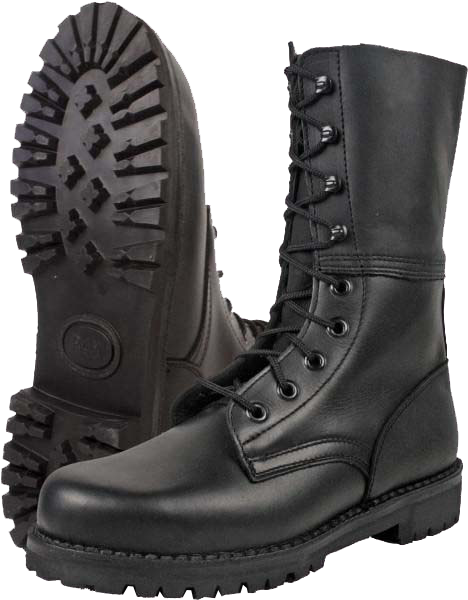
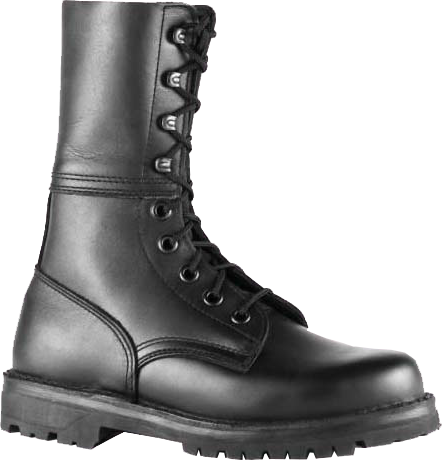
This style is used in the Austrian boots exclusively. A distinctive feature of this style is that the leather topper part represents by itself a strip of leather wrapped around the leg, without a rigid seam behind. On the one hand, the absence of the rear seam in the Austrian boots led to the appearance of another seam in the middle part of the boot's top - at the intersection of "upper" and "lower" parts of the leather uppers. In general, each additional seam in the boots construction is just a "weak point" that can resist the ingress of water only for quite a limited period of time. In addition, the top of the Austrian old-style boots, both "light" and "heavy", was very thin and soft, with time it becomes even softer and fix the ankle weakly, which increases the likelihood of injuries and sprains.
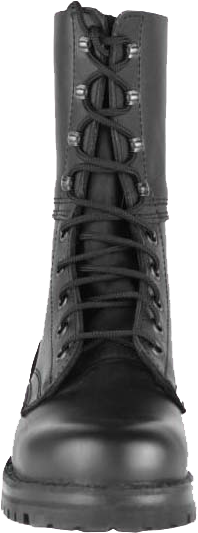
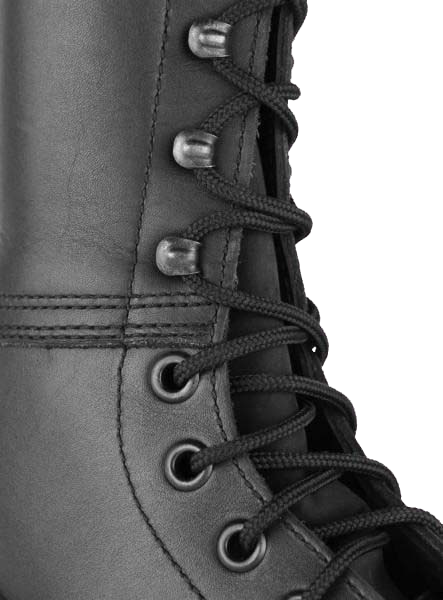
At the lower part of the boot the lacing is provided with five pairs of round eyelets, at the upper part - with four pairs of speed lacing hook, and such design is also a traditional element for Austrian boots, but not exclusive -the same lacing system with hooks and eyelets is used in the army boots of the world: in Danish M-58, Norwegian M-77 models, as well as in some American army boots of the 1960s...
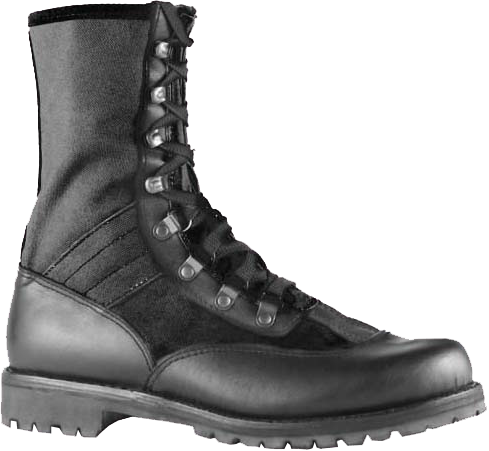
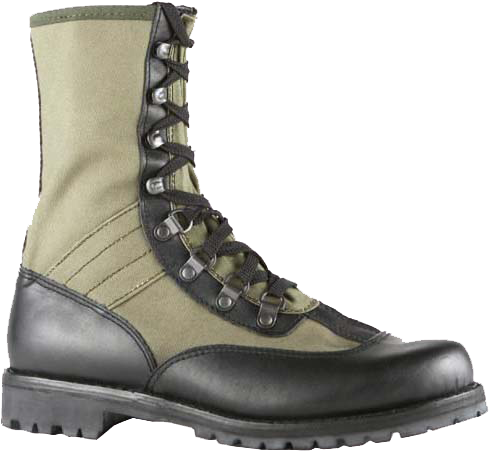
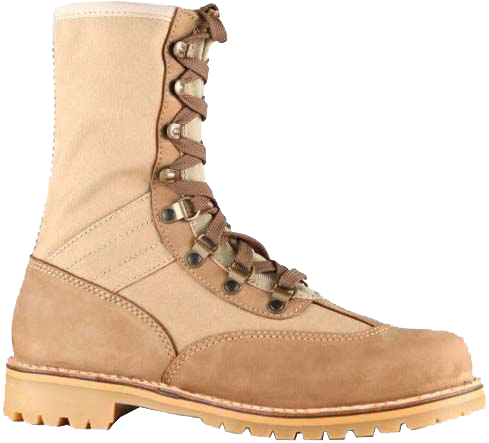
Concerning army boots for hot and dry climate (made of nubuck and canvas, beige-coloured) and for hot and humid climate (green and black-coloured, made of leather and canvas), one could mention that they are generally based on the same model, combining natural leather and durable breathable fabric (canvas). The Austrians have developed these boots themselves, and this kind of footwear has some unique features:
- The leather toecaps does not reach the leather bands with lacing fittings, but the junction between these two parts is provided with a leather jumper (a leather strip) that makes the connection and the whole construction much more reliable;
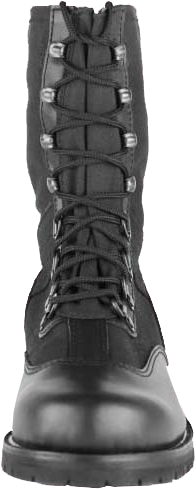
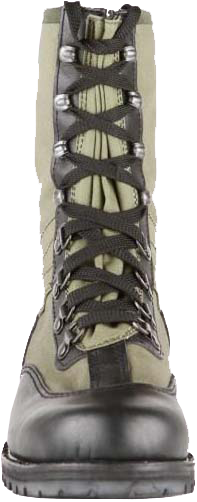
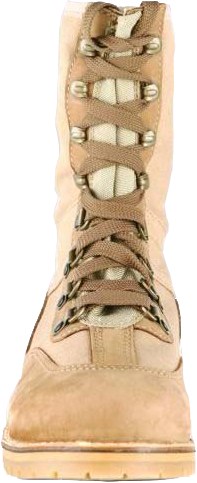
- The lacing system consists of four pairs of D-shaped half-rings and four pairs of hooks speed lacing;
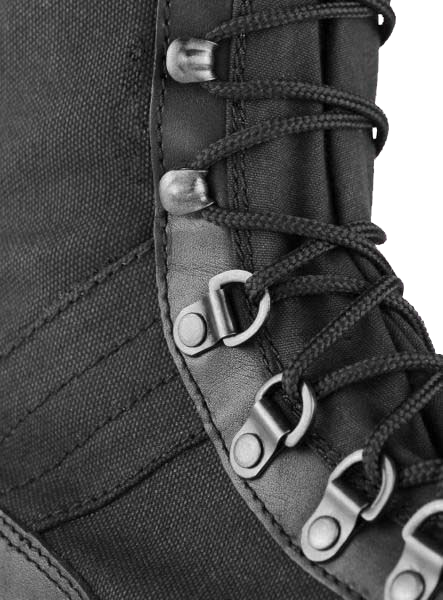
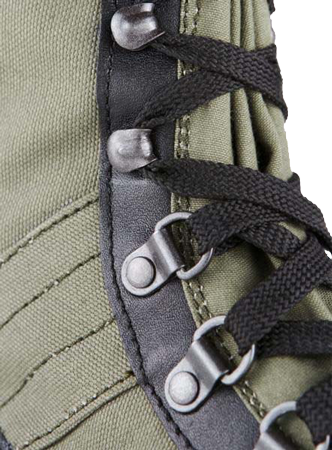
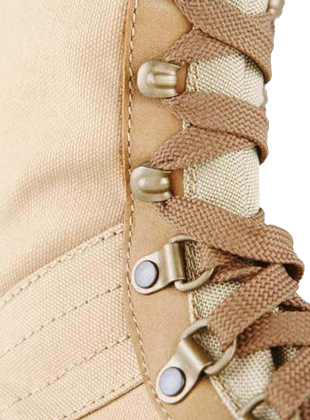
- The tongue of canvas and leather forms a single construction with leather strips, keeping the lacing fittings. This design differs from the traditional system, for example, an American one, where the tongue is covered from both sides with fastening lacing system;
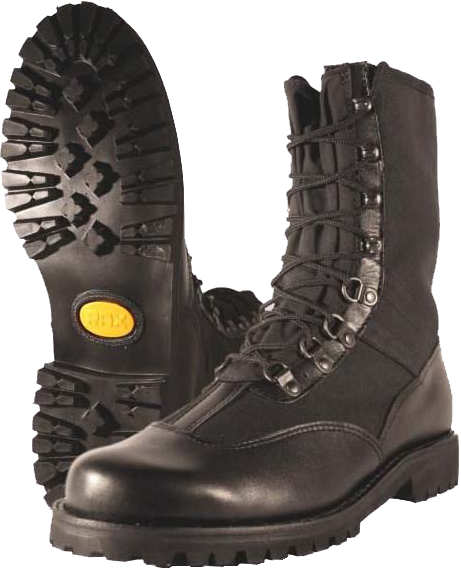
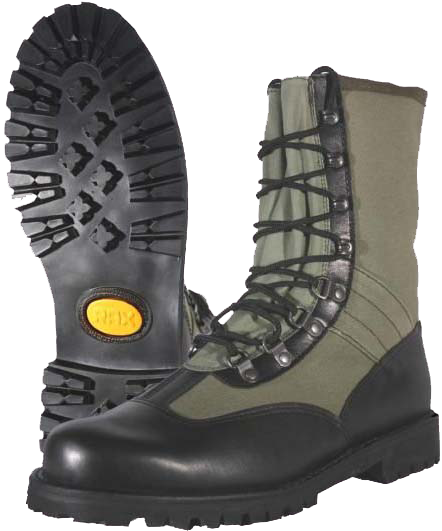
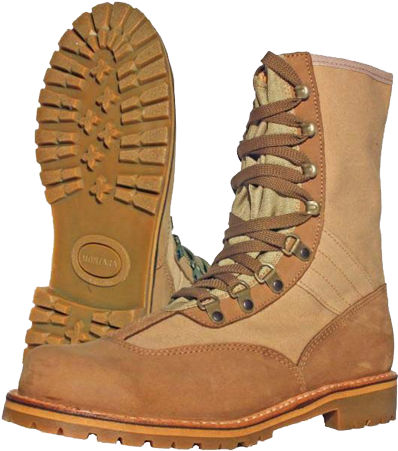
- The counter of the Austrian army boots look similarly to the counters of early American jungle boots, except that the top of the boot - the Austrians use not wide nylon strip, but a thin strip of tissue lining that protects the fabric thread on top from disarranging.


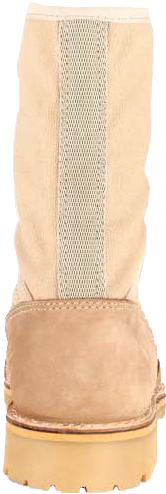
Austria is mainly mountainous, Alpine country, and this fact can not affect the design of its army boots. Among the Austrian military boots, it is worth mentioning the specialized ski boots, which were differed in appearance in different years.
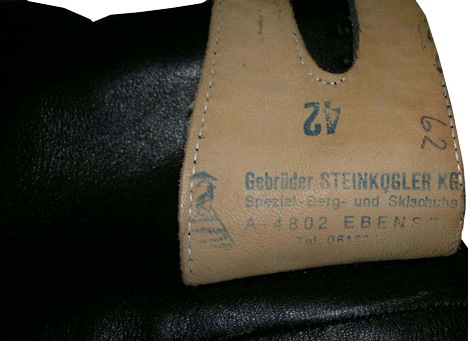
On the photo one can see an example of warm medium height lace-up boots, with two buckles leather cuffs at the top. Judging by the markings embossed on the skin from the outside, these boots date back to the 1970s, with outer soles of hard rubber soles, with glued and stitched soles, and the manufacturer is indicated on the stamps inside of the leather cuff with 2 buckles.
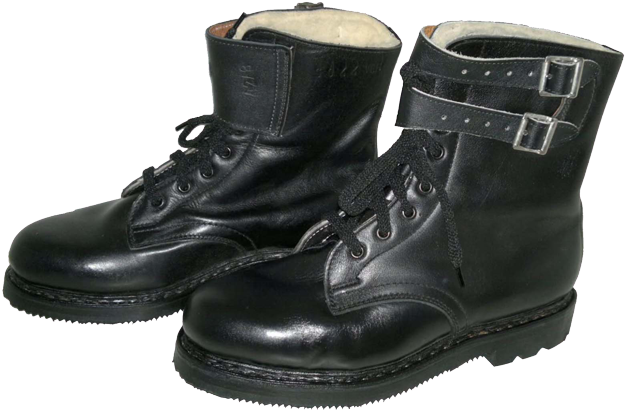
The heavy Austrian "ankle boots" (both early and late models) are often mistakenly referred to as "officer's boots", sometimes even "officer's mountaineering boots" on different forums or online trading websites This is nothing more than a leisurely fiction caused by the inertia of thinking and commitment to long outdated notions about what a soldier's boots should be more simple and worse in quality than officer's footwear. According to such opinions, if the boots are very nice and high in quality, the "they do not provide ordinary soldiers with such boots, or very few soldiers can get such boots at all".
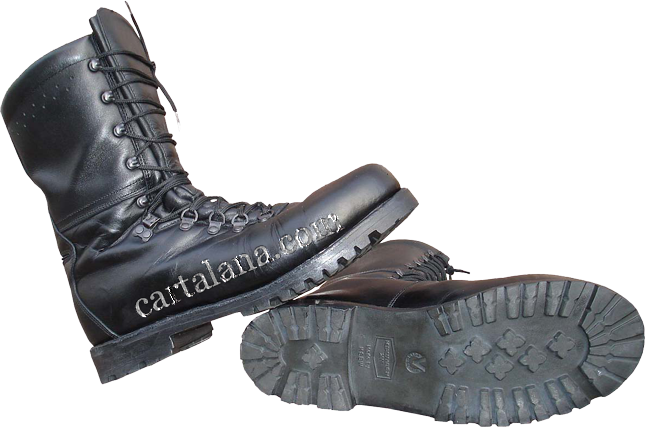
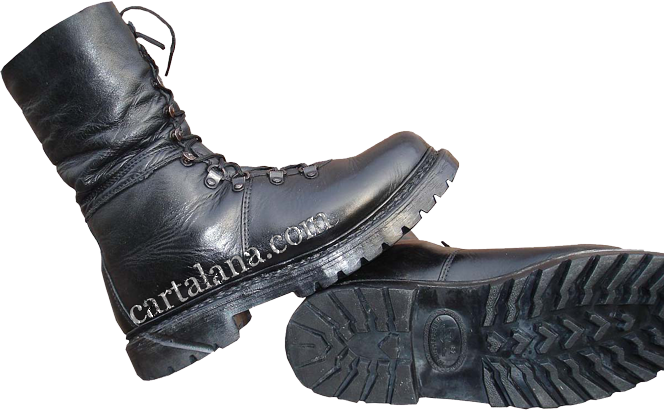
In fact it is the most common army boots worn by all the Austrian troops in the appropriate season and suitable weather and landscape conditions. There are many pictures of the Austrian military personnel in such boots, starting from ordinary soldiers to generals in the field uniform. And indeed the field uniform of the soldiers, officers and generals, as it should be in the armies of the civilized countries, are remarkably different only in ranks, but absolutely not cut, furniture or fabric quality. Only the parade uniform of soldiers and officers is different, and then only as a tribute to the old military traditions.
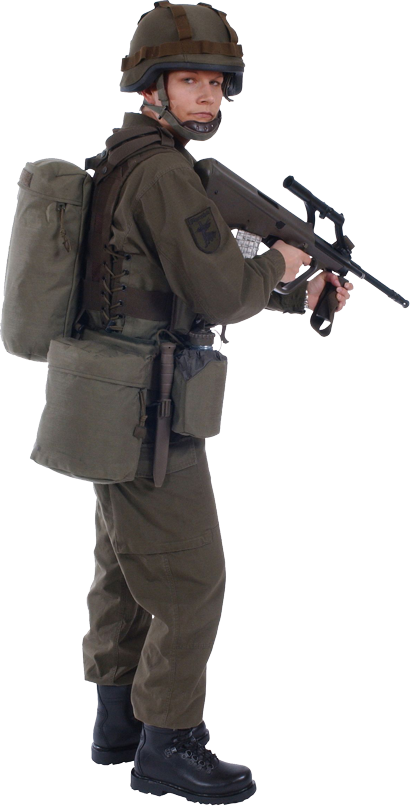
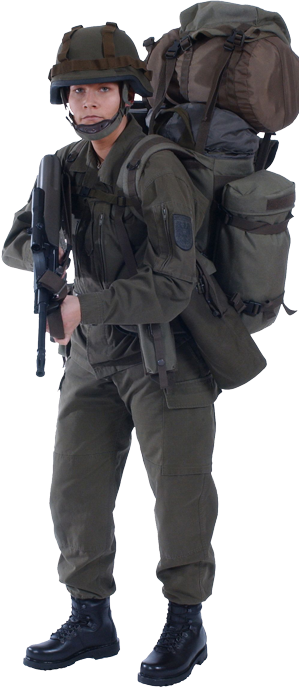
The early models of heavy boots had the outsoles with unique Austrian design tread, sometimes colloquially called "Steinkogler" or "Edelweiss" (under the name of the manufacturers of the boots and outsoles).
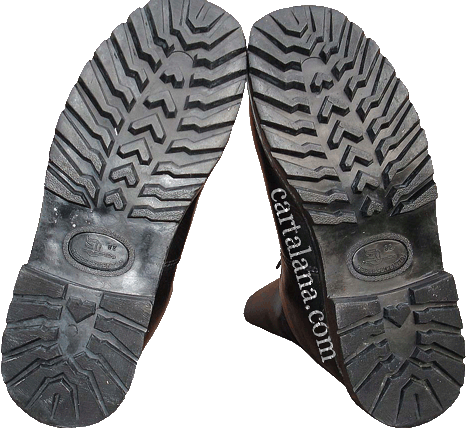
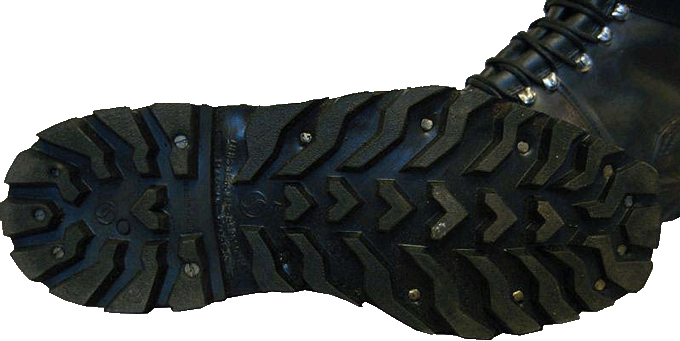
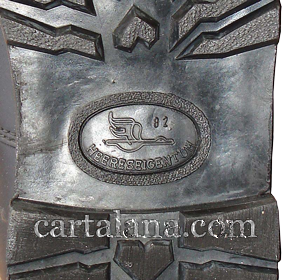
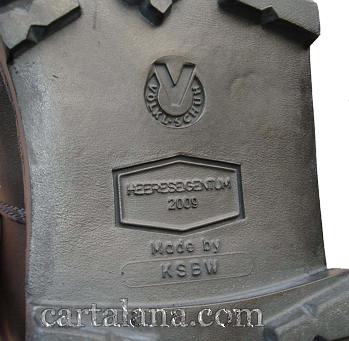
In fact, these outsoles were provided by a wide variety of manufacturers, the most widespread of which were the companies: "KSBW", "RAX", "MONTARA", "DAVOS" - the outsoles; "Steinkogler", "Volkl", "Kaslinger Seewalchen", "Edelweiss", "Mavic Alpine", "SEMPERIT" - soles and tops of boots; "Holzer" - tops.
The early models of heavy boots were of two kinds:
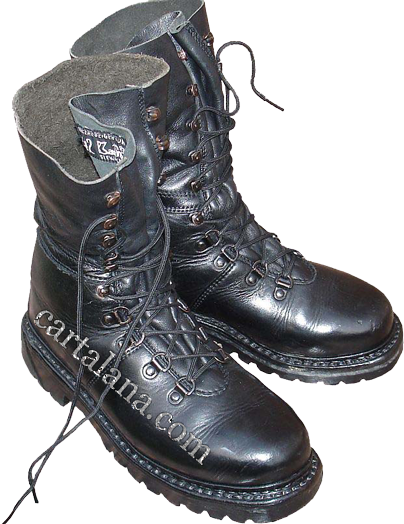
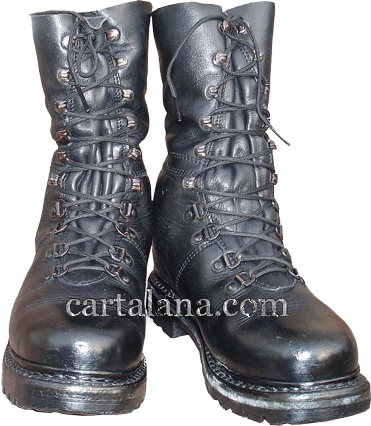
1) With mixed lacing system (4 pairs of semi-circular D-rings and 6 pairs of hooks for lacing), without counter reinforcement;
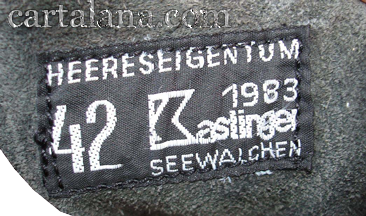
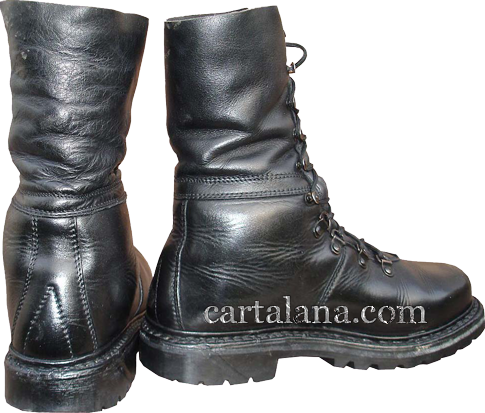
2) With twelve pairs of lacing hooks, reinforced counter, and more high compared to the aforementioned boots. In the 1970s, the marking stamps used to be put on the outside part of the boots, at the top. Later on the marking used to be indicated on a textile label on the top inner part of the boot's tongue. Oblique grooves on the heels of these boots were intended for ski bindings application.
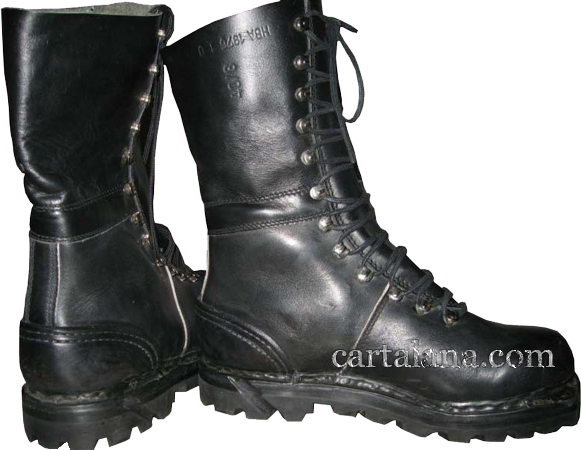

The soles of Austrian heavy military boots are fixed to the top by glueing and stitching method, the welt of the sole is also stitched and covered with the layer of vulcanized rubber, so durability, reliability and waterproof features of the boots are improved significantly.
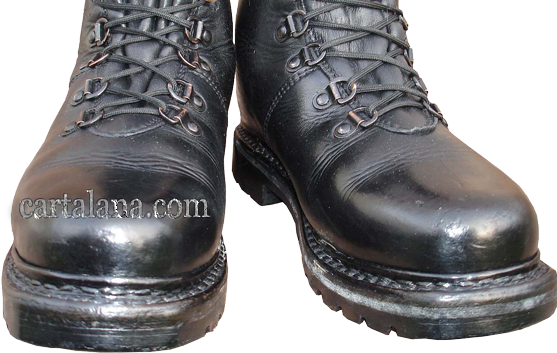
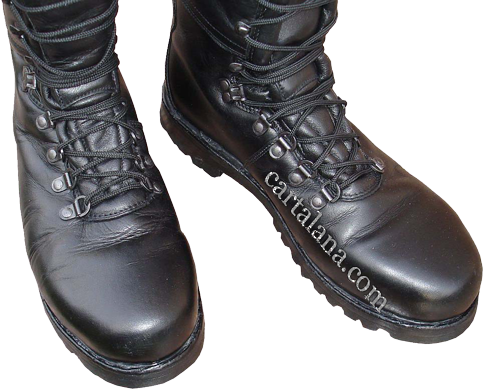
Unlike creators of Bundeswehr army boots "Mod. 2000", the Austrian footwear designers did not experimented with foamed rubber layer in the sole. This foamed rubber layer appeared to be a really weak point of the boots. Very often the owners of the "Mod. 2000" Bundeswehr boots had to throw away almost new boots due to overdrying and crumbling of the foamed rubber sole after several years of storing.
Late model of Austrian heavy boots feature the inner layer of cushioning material (wadding) between the inner layer of high quality yellow "glove" leather and outer layer of strong and flexible black leather. The boot's tongue is composite, with cushioning layer in the center and just soft leather inserts on the sides, such construction allows to adjust the width of lacing.
In the early models of heavy boots the padding is provided just at the bottom of the boots up to the level of the tarsal bones. Above this level the boots are unlined and have no padded "collars" on top.
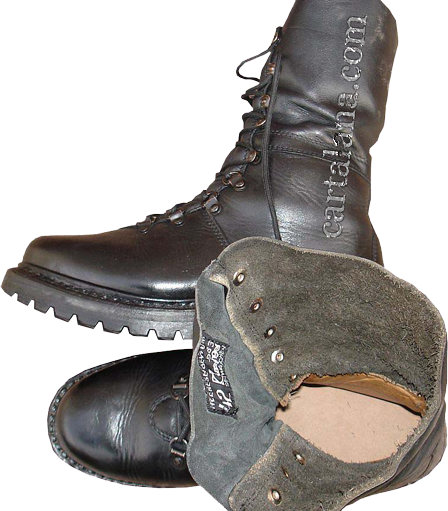
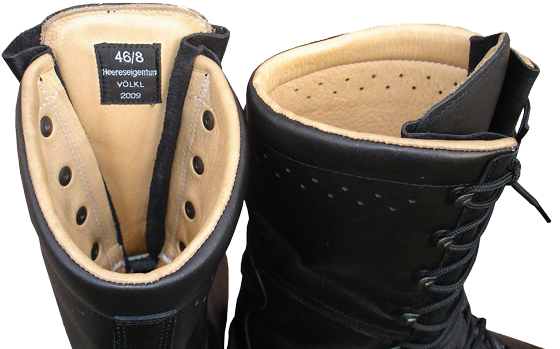
Perforations is provided on the upper side of the boots both outside and inside. It is intended for disposal of natural feet evaporation and moisture that could be impregnated through the inner soft yellow skin layer. Such design allows to provide comfortable climate inside the boots.

Damping insert is provided on the counter (rear side of the boots) for additional flexibility.

The early and late Austrian heavy boots have been originally supplied with insoles made of natural leather, but the insoles made of composite artificial materials are widely used now.

In the heavy boots of last modification, with full coverage of shock-absorbing padding inside the outsoles are made of a hard durable vulcanized rubber, with classic "Vibram" sole pattern, just the same as in all the Austrian light boots.

The early boots, with a partial shock-absorbing padding inside, had been equipped with original "Austrian" design of sole tread pattern. Since the Austrian heavy army boots have just a phenomenal robustness and exclusively high quality, on the secondary market one can often see these boots after re-soling or just repair, consisting of replacing the worn edges of the heels. The new heels can be produced by another manufacturer, for example, by the Italian "DAVOS", Czech "KSBW", or actually an Austrian company like "Mavic Alpine".
The Austrian boots, both of early and late models, heavy and light, can be found in many countries of the world. Such boots had been written-off the Austrian army depots after the procedure of "demilitarization". The Austrian way of "demilitarization" is quite a barbaric procedure: in the upper part of the boots tongues they use to cut large round holes up to 1,5 cm in diameter.


For comparison, the Bundeswehr "demilitarization" process looks much more favorable for the next owners of these boots - they make just thin punctures (one or two) at the rear top side of the boots, near the hinge for lacing, with a diameter of only about one and a half to two millimeters.
Exclusively for cartalana.com
We have much more interesting information on this site.
Click MENU to check it out!
∎ cartalana.com© 2009-2025 ∎ mailto: cartalana@cartalana.com